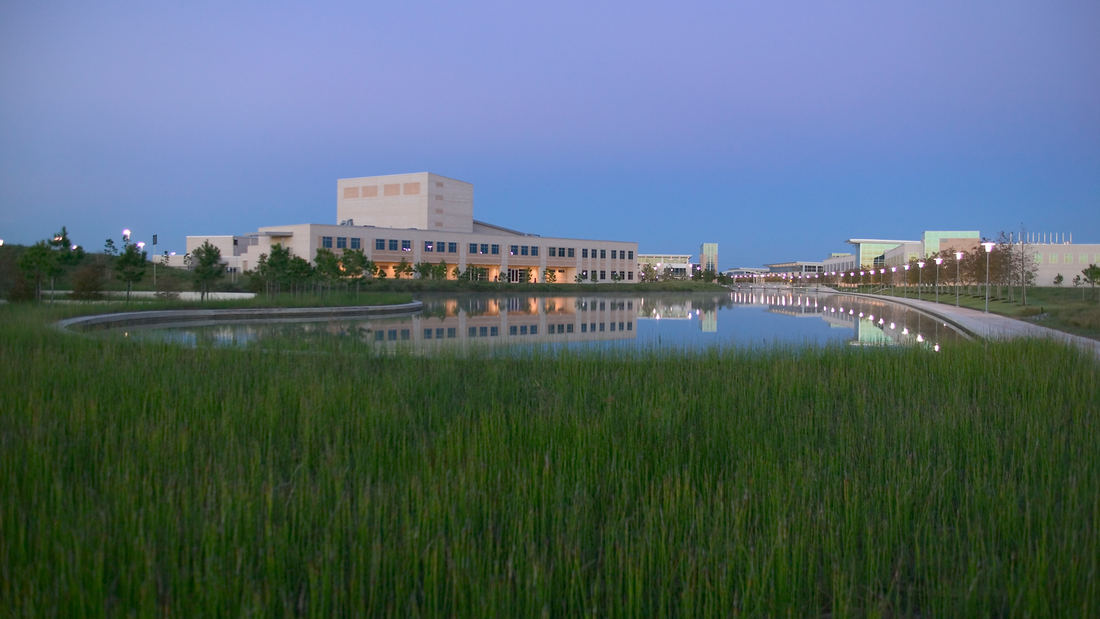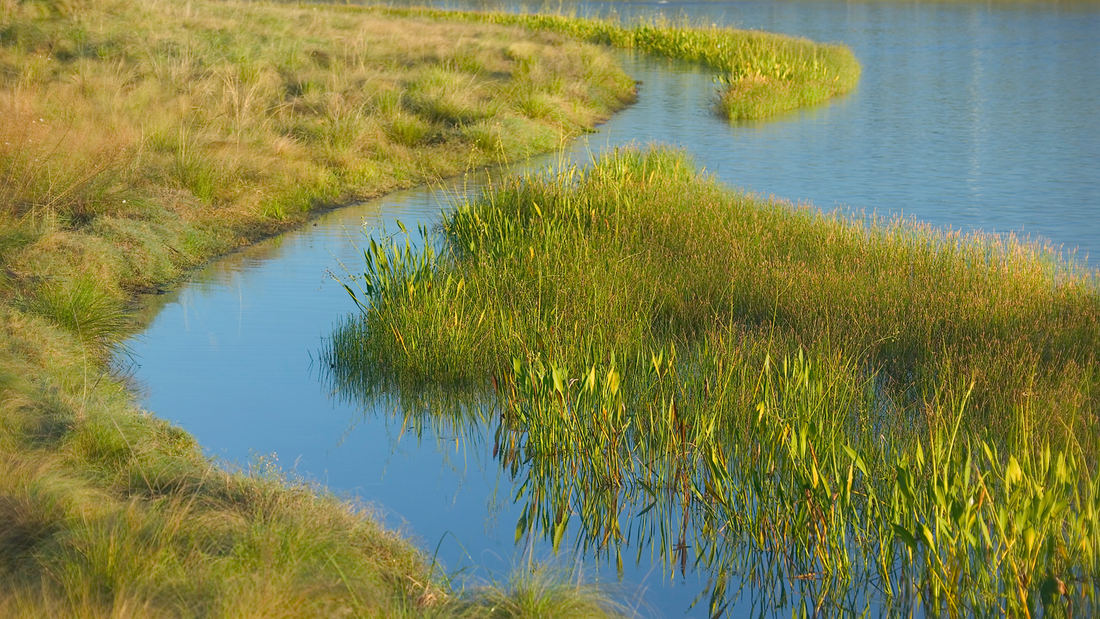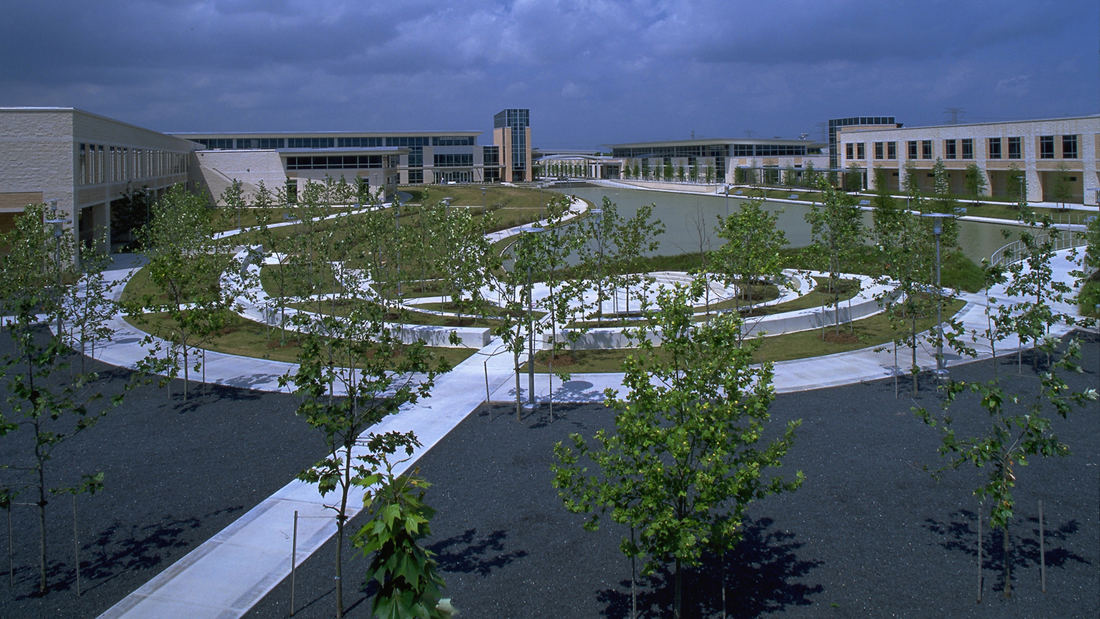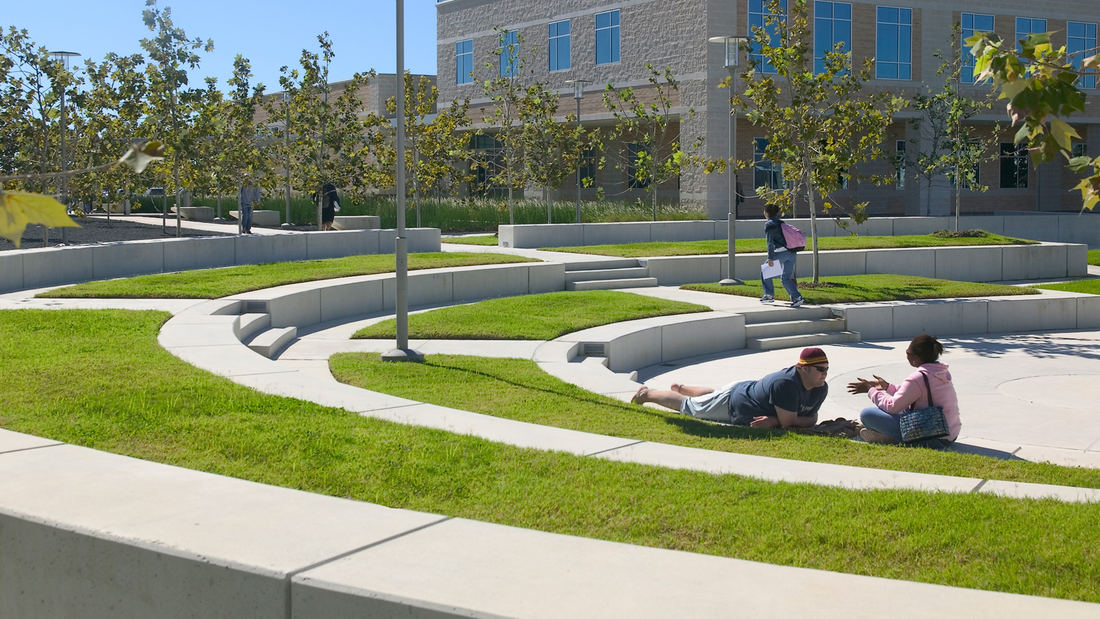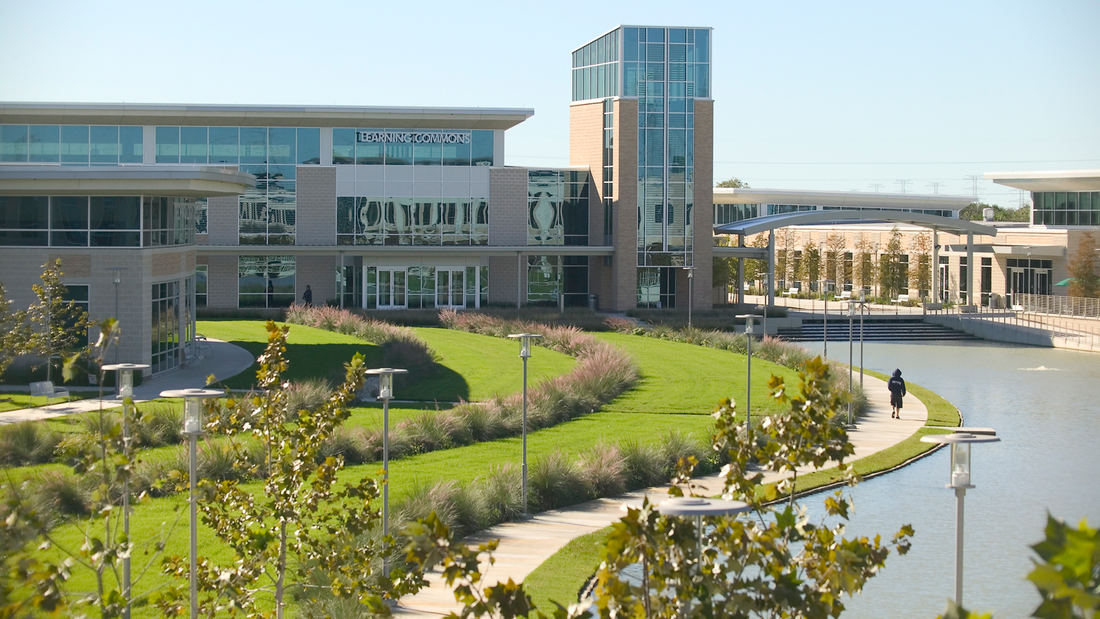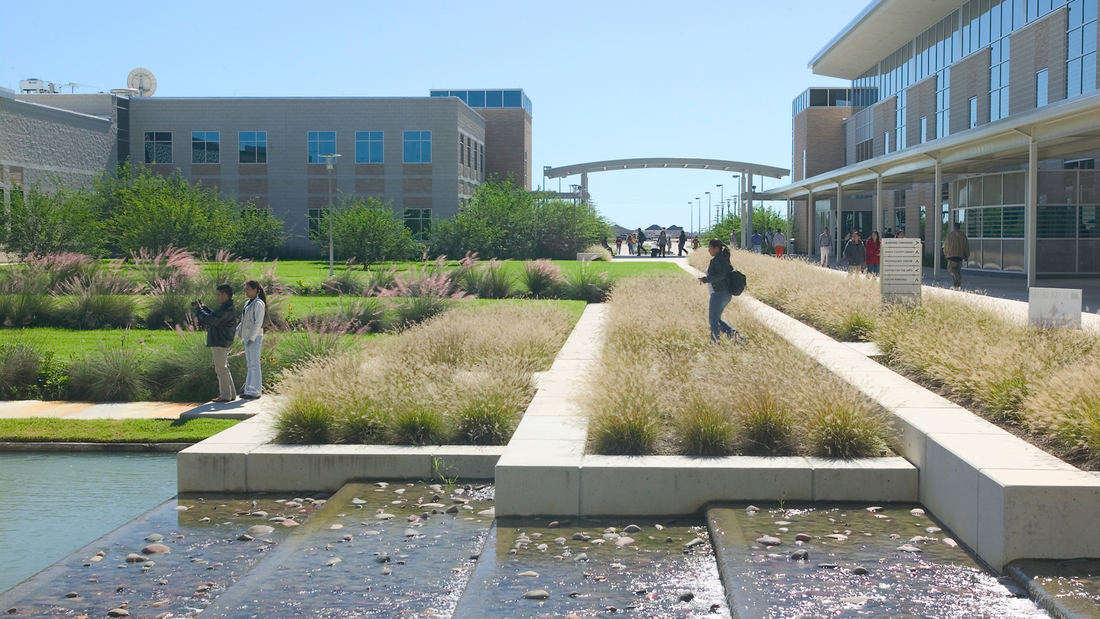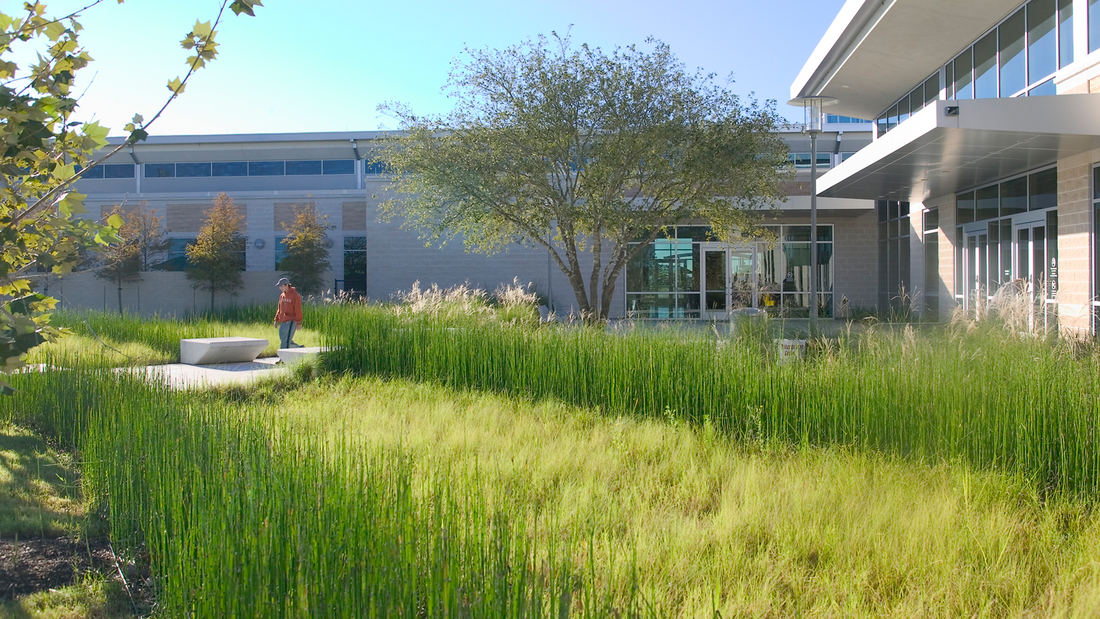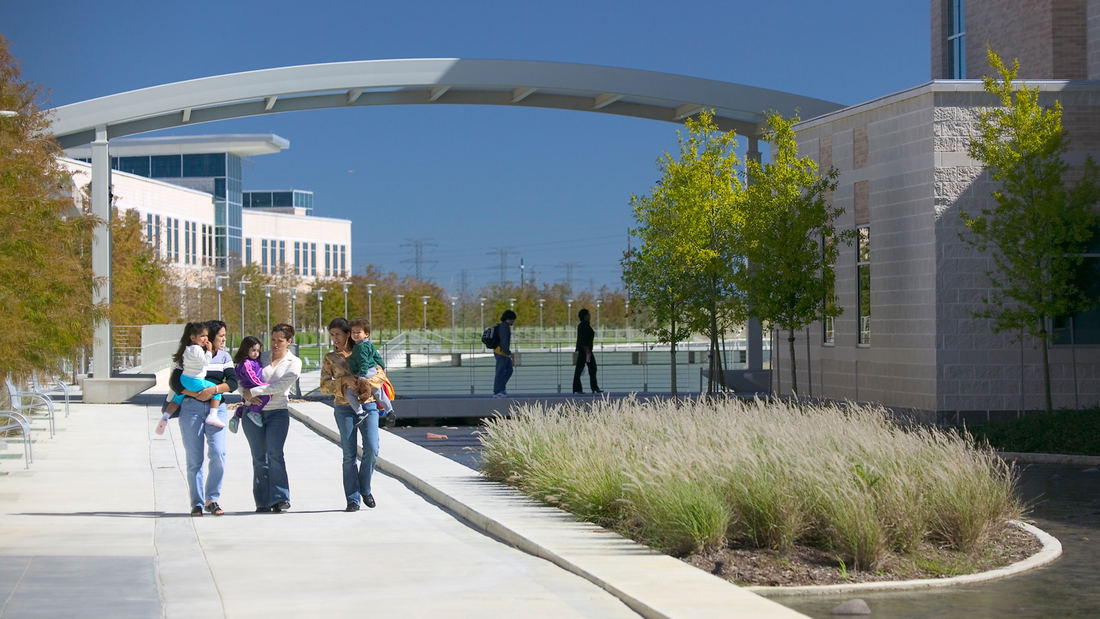The CyFair College Campus is a model for environmentally responsible development and restoration of a sensitive ecosystem. Located on the suburban fringe of northwest Houston, it is surrounded by the Katy Prairie, an endangered ecosystem of coastal prairie grass meadows marked by groves of trees and connected to a system of wetlands, bayous and ponds. SWA, in collaboration with the architect, chose an active approach to the restoration of the Katy Prairie. The artful interpretation of the Katy Prairie ecosystem is the conceptual basis for this College and Community campus and the concept was upheld throughout the entire design and construction process. The master plan is dedicated to careful planning and design enabling development and restoration of a delicate eco-system. The campus therefore becomes the educational model for students and members of the larger community – implementing environmentally sensitive design ideas. The plan introduces a variety of spaces to promote student / faculty and community interaction. Within the campus core the landscape has a more refined treatment, reinforcing the beauty of the prairie through contrast with the carefully finished edges. The campus pathways direct movement through the campus along the water, and the core outdoor spaces provide additional classroom space. Throughout the campus, the outdoor spaces encourage use by the public and CyFair students as an outdoor laboratory to learn about the Katy Prairie ecosystem. The Katy Prairie had been lost. Decades prior to acquisition by the College District this flat site had been entirely cleared for grazing, resulting in the loss of the prairie ecosystem. The task of restoring the prairie and transforming this vast sterile site to an environmentally rich environment for learning was a significant challenge but was accomplished with the visionary commitment of the College, Community, and Community College District. The native environment was restored resulting in a campus that is oriented to water and meadows. Other major challenges included project schedules and budget constraints. Meeting both of these challenges, the entire CyFair College Campus was programmed, master planned, and the first phase designed and constructed in 21 months. More impressively the landscape, including all site development except roads, parking lots, utilities, and signage, was implemented for under $2.00 US per square foot. Contrasting with the wild beauty of the Prairie, the formal appearance of the inner campus plantings draws people in and to the waterfront areas. A palette of cultivated and more ornamental plantings graces the inner campus. Due to constrained budgets creative approaches to the construction of lakes and bridges were employed. Bridges were constructed as slab-on-grade structures and soil was excavated to create lakes. A similar approach was taken to create the lake edges. As a public institution CyFair College is designed with materials that will be long-lived and that are affordable, being responsive to the College’s limited maintenance resources. The use of native planting materials greatly reduces grounds maintenance requirements to a surprisingly low level. Trees are an important component of the prairie and in this climate, critical for the comfort of people utilizing outdoor spaces. At CyFair College the campus tree species are either native or indigenous to the prairie. Trees define roads and campus entries as well as line the central lake creating a shaded waterfront promenade that links the buildings. More than 3,200 trees were planted on the campus including Bald Cypress, Loblolly Pine, Mexican Sycamore, Live Oak, and thorn-less Mesquite. On a clear fall morning, light glows on the rust and yellow prairie grasses creating a distinctive contrast against the deep blue water. Wildflowers continue to bloom as the campus comes back to life for the new Academic season. Muhly Grass has turned to a fall purple color and the Cypress trees are bright orange. This special prairie season has been fully restored to its original beauty. The campus development increased areas of impervious surfaces, resulting in increased runoff being added to the already overburdened regional drainage system. The solution was a 132-acre detention lake that not only accommodates storm water runoff but that also provides irrigation water for the campus, thus conserving water resources. The campus will also benefit the wildlife of the Katy Prairie through provision of additional habitat for the annual migratory bird population that frequents the prairies waterways. The larger lakes incorporate shelves just below water level creating locations for the planting of native wetland plants such as Arrowhead and Sand Spikerush. These shelves have another practical use as well, as they are located at storm water outfall points and therefore “scrub” runoff and improve water quality. All storm water is captured on site and filtered through sediment traps and wetland plants prior to its re-entry into the regional drainage system. CyFair College is a commuter campus not connected to any public transit, and as a result, paved parking surfaces are extensive. The environmental impact of thousands of additional cars was a major concern to the designers – the heat island effect caused by large areas of paving can be devastating. To prevent damage from this effect, Loblolly Pine trees are integrated in double rows throughout the parking areas. Through a collaborative planning and design process involving a supportive community, District, and College leadership, and supported with research from regional experts, the design team has created a campus within a prairie that is focused on 18 acres of lakes. Water and prairie grasses are the defining elements of the Katy Prairie and have become the environmental signature of CyFair College and the larger community.
Stanford Branner Hall
Branner Hall is a three-story undergraduate dormitory built in 1924 by Bakewell and Brown, prominent architects of the time who were also responsible for San Francisco’s City Hall. The renovation design creates two significant courtyards: an entrance courtyard flanked with four-decades-old magnolia trees shading a seating area and an interior courtyard with a ...
Cañada College Kinesiology & Wellness
In collaboration with ELS, SWA designed a new landmark for Canada College, the Kinesiology & Wellness Center. The project replaced a windowless 1960s-era gym building and outdoor asphalt yard with the glassy new building and infinity pool deck on this hilltop campus with fantastic views. The project also created a new campus arrival and ceremonial overlo...
CREATE Campus, National University of Singapore
CREATE, the Campus for Research Excellence and Technological Enterprise, is an international research campus and innovation hub at the National University of Singapore. Home to a vibrant scientific community, CREATE hosts the National Research Foundation, interdisciplinary research centers from top universities, and corporate laboratories such as the Singapore...
Universidad de Monterrey Campus Master Plan
The project focuses on improving the sustainability of the 247-acre campus, designing a shift from a vehicular orientation to one that encourages pedestrian, bicycle, and transit use. Site design strategies employ indigenous plant materials and natural water retention and filtration for low-maintenance landscaping. Phase 1 includes site design for one of Latin...


